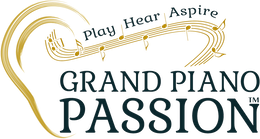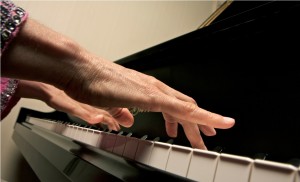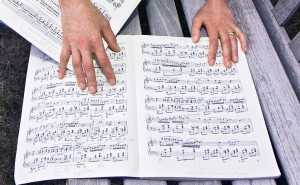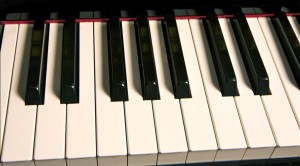My grandfather, Harold, who lived to 91, could navigate routes through Pittsburgh even after he became legally blind. Harold advocated finesse behind the wheel. “Easy on that gas pedal,” he drawled at me from shotgun. Now his words seem relevant to my use of the damper pedal in adult piano lessons.
Harold’s advice to go easy on the pedal was not top of mind when I studied Chopin’s Raindrop Prelude early on in my adult piano lessons, after returning to the piano from a 25-year hiatus. Instead of considering how to use the pedal during my practice, I savored the music’s marriage of the deep bass with yearning chords, enhanced by liberal use of the damper pedal. Conveniently, the pedal helped gloss over uneven grace notes and sudden dips in the melodic line.
When the time arrived to prepare the Raindrop Prelude for an amateur concert with the New York Piano Society, it was as though my weaknesses leapt from the score and lined up on the piano. I sweated through a nervous month reversing bad habits that the pedal had disguised. Over the next several years, I felt caught in a cycle of struggling with bad habits just before recitals and performances.
When it came time to learn the Debussy First Arabesque, I decided I wanted my experience with the music to be different. “It seems like it takes me forever to learn the notes,” I said to my piano teacher Stephen. “And then I pick up these bad habits I have trouble getting rid of.”
Stephen asked me to play the opening phrase of the Debussy First Arabesque. I pulsed out the notes awkwardly, the broken chords at least connected by my foot clamped on the damper pedal.
“Go easy on the pedal,” he cautioned. His advice sounded like an eerie echo of Harold. I took my foot off the damper pedal with a little thump. Come to think of it, Stephen had delivered a similar caution many times before in my adult piano lessons.
The First Arabesque’s motif of triplets meandering down the keyboard had first drawn me to the music. When I tried the music at home without the pedal, the motif sounded stale and dry. Yet learning the notes without the pedal led to some intriguing discoveries:
1) Wrong notes jarred, insisting that I fix them immediately.
2) Unevenness in the Arabesque’s opening swell of triplets blared until I spent a half an hour playing the phrase repeatedly, sans pedal, of course.
3) Without the high gloss of the pedal, my prosaic rendition of an arpeggio that swept up the keyboard required some rubato.
As a reward, I allowed myself to play the music with the pedal at the end of each practice session. Doing so had the virtue of allowing me to experiment with the musical line once I had added pedal to the mix. I realized that by practicing in the early days without pedal, I was acquiescing to dry music for the satisfaction of learning the piece more quickly.




0 Comments